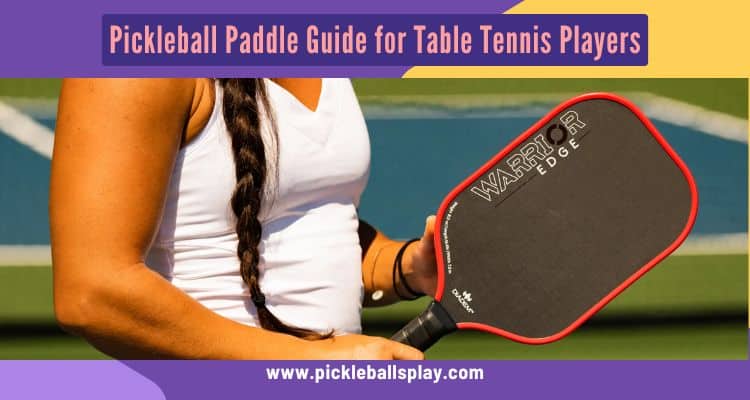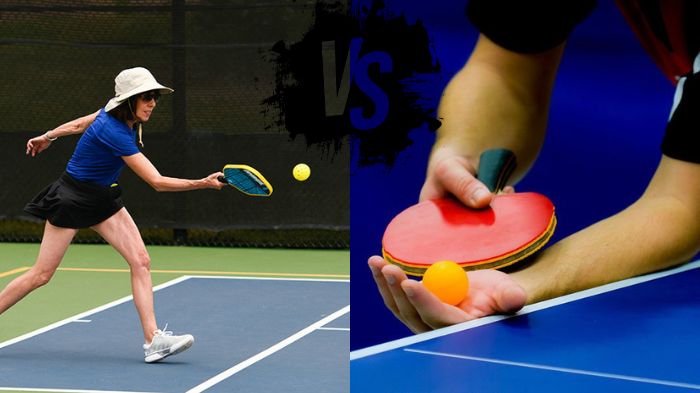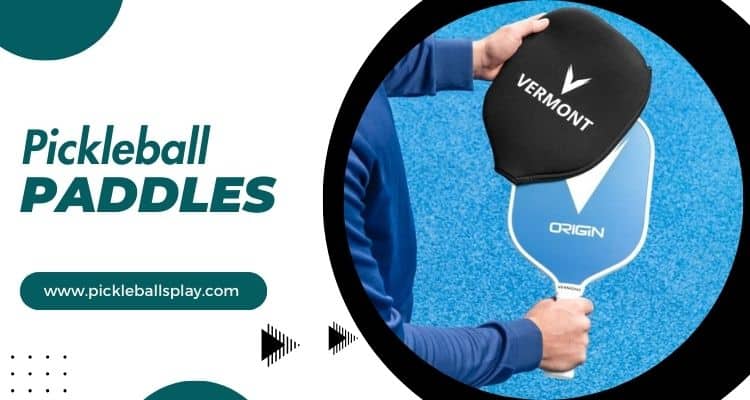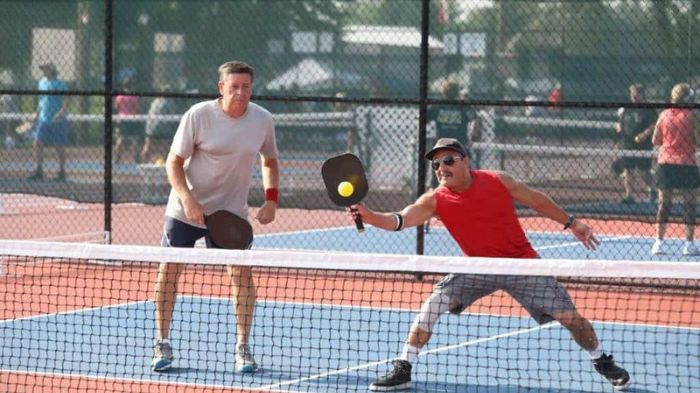A Pickleball Paddle Guide for Table Tennis Players: Pickleball has taken the sports world by storm, blending elements of tennis, badminton, and table tennis into a fast-paced, addictive game. For table tennis players looking to leap pickleball, the transition can feel both familiar and foreign. One of the biggest hurdles? Choosing the right pickleball paddle. While your table tennis skills quick reflexes, spin mastery, and precise placement give you a head start, the equipment is a different beast entirely.
This comprehensive guide, updated with the latest insights as of April 2025, will help you navigate the world of pickleball paddles and find the perfect fit for your table tennis background. Let’s dive in!

Why Table Tennis Players Are Primed for Pickleball Success
Table tennis and pickleball share more than a few similarities. Both sports demand lightning-fast hand-eye coordination, strategic shot placement, and a knack for spin. The origins of pickleball even trace back to a ping pong paddle its first paddle was a repurposed table tennis blade! Today, players with a table tennis background often excel in pickleball’s “kitchen” (the non-volley zone), where quick hands and finesse reign supreme.
However, the paddle you wield in pickleball will significantly influence how well your skills translate. Understanding the differences and nuances is key to unlocking your potential on the court.
Key Differences Between Table Tennis and Pickleball Paddles
Before we explore paddle options, let’s break down how pickleball paddles differ from their table tennis counterparts. These distinctions will shape your decision-making process.
| Feature | Table Tennis Paddle | Pickleball Paddle |
|---|---|---|
| Size | ~10” long, 6” wide | Up to 17” long, combined length + width ≤ 24” |
| Weight | ~3 oz (85g) | 7.2–8.5 oz (204–241g) |
| Materials | Wood with rubber coating | Wood, composite, graphite, carbon fiber |
| Grip Style | Flared or penhold | Cushioned, perforated, or contoured |
| Surface | Rubber for spin | Solid, textured for control/power |
- Size and Shape: Pickleball paddles are larger, offering a bigger sweet spot for easier ball contact perfect for the slower, heavier pickleball.
- Weight: At 7–8 ounces, pickleball paddles dwarf the featherlight table tennis paddles, impacting swing speed and power.
- Materials: While table tennis paddles rely on rubber for spin, pickleball paddles use solid surfaces like carbon fiber or fiberglass for durability and performance.
- Grip: Table tennis players might lean toward the penhold grip, but pickleball typically favors tennis-inspired grips like Eastern or Continental.
These differences mean your paddle choice will either amplify your table tennis strengths or leave you struggling to adapt.

What to Look for in a Pickleball Paddle as a Table Tennis Player
As a table tennis player, your playing style likely emphasizes control, spin, and quick reactions over raw power. Here’s what to prioritize when selecting a pickleball paddle:
1. Weight: Light or Midweight for Familiar Feel
Table tennis paddles are ultralight, so a heavy pickleball paddle (8.5+ oz) might feel like swinging a brick. Opt for:
- Lightweight (7.2–7.8 oz): Maximizes maneuverability for fast volleys and dinks your table tennis bread and butter.
- Midweight (7.9–8.4 oz): Balances control and power, easing the transition without sacrificing too much speed.
3. Surface Material: Spin and Touch
Table tennis players live for spin, and while pickleball spin isn’t as extreme, the paddle surface matters:
- Carbon Fiber: Offers a crisp, responsive feel with excellent spin potential ideal for precision players.
- Graphite: Lightweight and soft, perfect for touch shots like dinks and resets.
- Fiberglass: More power-focused, better for aggressive drives but less suited to your finesse game.
2. Grip Size: Comfort Meets Control
Your grip size should feel natural, mirroring your table tennis paddle. Most pickleball grips range from 4” to 4.5”. Since table tennis players often prefer smaller, flared grips:
- Stick to a 4”–4.25” circumference for a familiar, secure hold.
- Avoid oversized grips unless you’re prone to elbow strain (a common table tennis injury).
4. Shape: Precision vs. Reach
Pickleball paddles come in standard, elongated, and hybrid shapes:
- Standard (8” wide, 15.5”–16” long): Larger sweet spot for consistency great for table tennis players mastering the bigger paddle.
- Elongated (7.5” wide, 16.5”+ long): Extra reach but a smaller sweet spot suits players confident in their accuracy.
5. Core: Feel and Feedback
The paddle’s core affects how the ball feels off the face:
- Polymer: Softer, quieter, and control-oriented your go-to for table tennis touch.
- Nomex: Firmer and louder, with more pop less ideal unless you’re adding power to your game.

Top Pickleball Paddles for Table Tennis Players in 2025
Based on the latest trends and expert reviews as of April 2025, here are five paddles tailored to your table tennis roots:
1. Selkirk Vanguard Control
- Weight: 7.8 oz (lightweight)
- Surface: Carbon fiber
- Core: Polymer
- Why It Works: Its soft feel and spin-friendly surface mimic the responsiveness of a table tennis paddle, making it a control freak’s dream.
3. ProKennex Ovation Flight
- Weight: 7.6 oz (lightweight)
- Surface: Graphite
- Core: Polymer
- Why It Works: Ultra-light and plush, it’s perfect for quick hands and injury-prone shoulders a nod to your table tennis agility.
2. JOOLA Radius
- Weight: 8.1 oz (midweight)
- Surface: Carbon fiber
- Core: Polymer
- Why It Works: Designed with table tennis players in mind (JOOLA’s a table tennis brand!), it offers a familiar grip and exceptional touch.
4. Engage Pursuit Pro EX 6.0
- Weight: 8.4 oz (midweight)
- Surface: Carbon fiber
- Core: Polymer
- Why It Works: Balances control and power with vibration dampening, easing the strain of a heavier paddle on your table tennis-trained wrists.
5. Paddletek Tempest Wave Pro
- Weight: 8.4 oz (midweight)
- Surface: Graphite
- Core: Polymer
- Why It Works: A cult favorite for its soft touch and large sweet spot, it’s forgiving as you adjust to pickleball’s bigger paddle.

From Table Tennis to Pickleball Mastery
Your paddle is only half the battle. Here’s how to leverage your table tennis skills with your new pickleball gear:
- Master the Dink: Your quick wrists are perfect for soft, angled shots in the kitchen practice with a lightweight paddle for precision.
- Adapt Your Spin: Pickleball balls don’t grip like table tennis balls, so focus on paddle angle and a textured surface for topspin or slice.
- Adjust Your Swing: Shorten your strokes pickleball rewards compact swings over table tennis’s whippy loops.
- Experiment with Grips: Try the penhold grip for fun, but the Eastern grip will feel more natural for pickleball’s versatility.
Recent Post: Can You Play Pickleball Indoors?
Common Mistakes to Avoid
- Going Too Heavy: A 9 oz paddle might overpower your finesse game and strain your arm.
- Ignoring Grip Size: Too big, and you’ll lose the control you’re used to too small, and it’ll slip mid-rally.
- Chasing Power: Table tennis is about placement, not power stick to your strengths with a control-focused paddle.
Final Thoughts
Switching from table tennis to pickleball is an exciting journey, and the right paddle can make all the difference. As of April 2025, the pickleball market is brimming with options tailored to your unique skills. Whether you choose the lightweight Selkirk Vanguard for its touch or the JOOLA Radius for its table tennis heritage, prioritize control, familiarity, and spin to dominate the court.
Your quick hands and sharp instincts are already a winning combo now, arm them with the perfect paddle and watch your pickleball game soar. Ready to play? Grab your paddle, hit the court, and let your table tennis roots shine!




